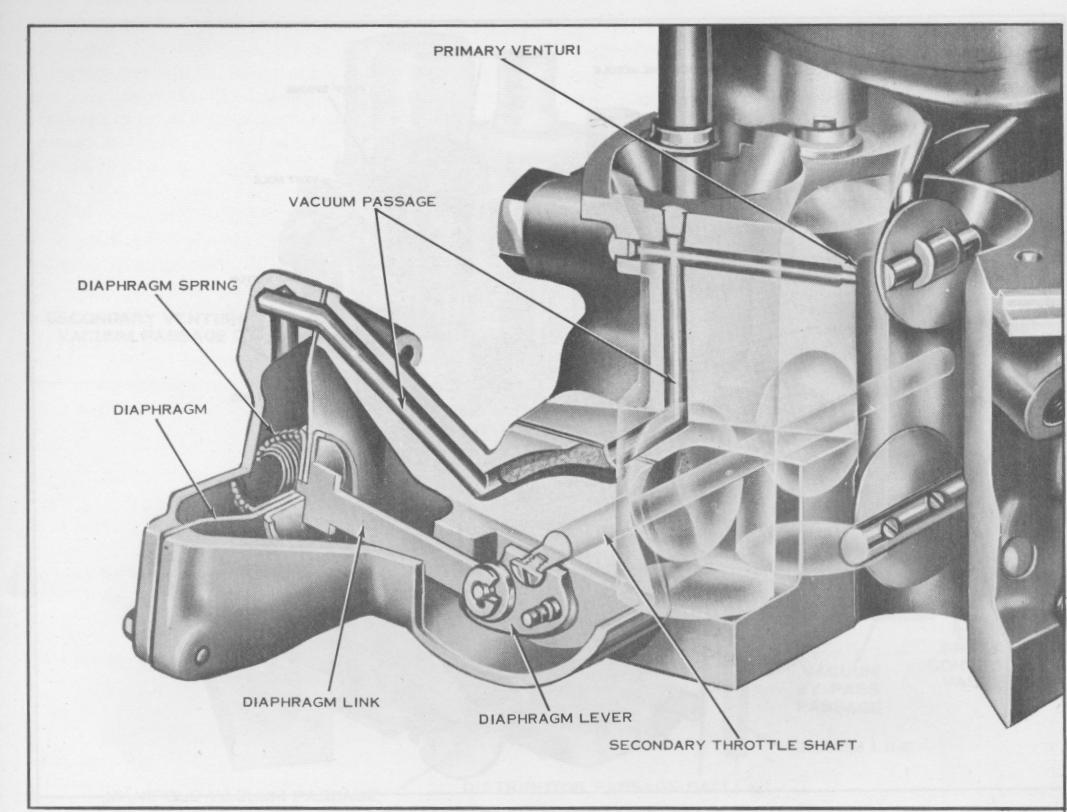
plates are moved open, air flow through the primary bores is increased. This results in an increase in the strength of the venturi vacuum. The secondary throttle plates will remain closed until the engine's power requirements exceed the breathing capacity of the primary bores. At that point, the pull of venturi vacuum will overcome the tension of the diaphragm spring. The diaphragm, acting through the diaphragm link and lever, will commence opening the secondary plates. Any further opening of the primary plates beyond the transition point will be accompanied by a corresponding opening of the secondary plates.
When the primary plates are moved closed, venturi vacuum in the primary bore will be reduced. As the vacuum acting on the diaphragm is lessened, the tension of the diaphragm spring will commence closing the secondary plates. The
diaphragm spring is assisted by the design of the secondary plates. Each secondary plate is slightly offset. When the plates are nearly closed, the combined force of manifold vacuum and the air stream has greater effect on the larger, upstream area of the plates. This helps to close them. The secondary plates are retained in the closed position when the primary plates are fully closed by the secondary throttle connecting rod. This rod, which is fastened to the primary throttle lever, rides in a slot in the secondary throttle lever.
Some versions of this carburetor incorporate a ball check valve in secondary throttle operating vacuum passage. The check valve restricts the amount of venturi vacuum allowed to enter the diaphragm chamber. This controls the rate at which the secondary throttle plates are allowed to open.